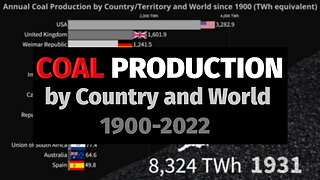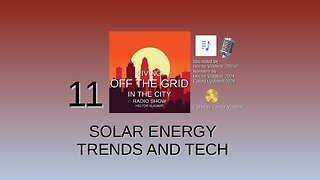Solar Power Generation by Country and World 1983-2021
This bar chart race shows the annual solar power generation by country and world, from 1983 to 2021, measured in terawatt-hours (TWh).
Solar power generation has come a long way since the 1980s. Over the past few decades, advancements in technology and a growing demand for clean energy have made solar power a more accessible and cost-effective option for homes and businesses around the world.
In the 1980s, solar power was still a relatively new technology. Solar panels were expensive to produce and were not yet efficient enough to generate significant amounts of electricity. However, a growing concern about the environmental impact of fossil fuels and a desire to reduce reliance on foreign oil led to increased research and development in the field of solar power.
By the 1990s, the cost of solar panels had started to decrease, making them more accessible to homeowners and businesses. This led to a surge in demand for solar power, particularly in sunny regions like California and Arizona. The federal government also began offering tax incentives and other subsidies to encourage the adoption of solar power.
In the early 2000s, advancements in technology led to further improvements in solar panel efficiency, making solar power an even more viable option for homes and businesses. The installation process also became easier and more streamlined, with many companies offering turnkey solutions that included design, installation, and maintenance.
Today, solar power generation is a major industry around the world. Solar power is also becoming more popular in developing countries, where it can provide electricity to remote areas without the need for costly infrastructure.
There are many benefits to using solar power. Not only is it a clean and renewable source of energy, but it can also save homeowners and businesses money on their energy bills. In addition, solar power can help to reduce reliance on fossil fuels.
In conclusion, solar power generation has come a long way since the 1980s. From expensive and inefficient technology to a major global industry, solar power has proven to be a viable and cost-effective alternative to fossil fuels. With continued advancements in technology and growing demand for clean energy, solar power will likely continue to play an increasingly important role in meeting our energy needs for years to come.
Data source: BP Statistical Review of World Energy
Music:
DivKid - Icelandic Arpeggios
Special intro effect by:
AA VFX: https://www.youtube.com/c/dvdangor2011/
Data visualization created with flourish.studio
-
 3:58
3:58
WhatDaStat
7 months agoCOAL Production by Country and World since 1900
36 -
 15:43
15:43
Undecided with Matt Ferrell Channel Archive
1 year agoCheap Solar Power For Everyone!
44 -
 12:52
12:52
Undecided with Matt Ferrell Channel Archive
1 year agoSolar Panels Plus Farming? Agrivoltaics Explained
13 -
 11:46
11:46
TheDoItYourselfWorld
9 years agoImproved Solar Power Production With New Solar Panels
6 -
 1:11
1:11
ConservativeTribune
6 years agoWhat Can Happen When Solar Panels Are Put in Other Countries
6 -
 29:20
29:20
Living Off the Grid in the City Radio Show
1 month ago11 Solar energy trends and technologies
28 -
 14:49
14:49
Undecided with Matt Ferrell Channel Archive
1 year agoExploring the Power Grid of the Future
8 -
 12:52
12:52
Undecided with Matt Ferrell
2 years ago $0.01 earnedSolar Panels Plus Farming? Agrivoltaics Explained
45 -
 5:40
5:40
jadsolargroup Solar Panels
1 year ago2023 Solar Energy Trends You Need to Know for Your Business Success
8 -
 13:09
13:09
Undecided with Matt Ferrell Channel Archive
1 year agoHow Solar Panels Are Changing Agriculture - Agrivoltaics Revisited
331